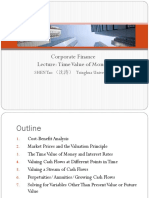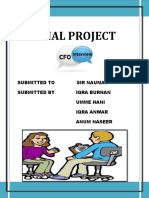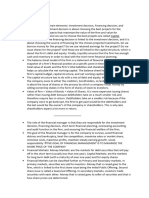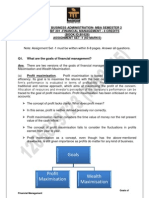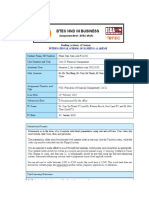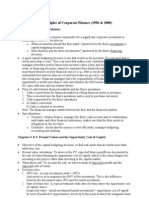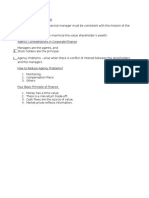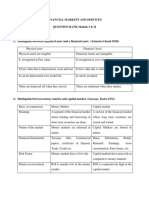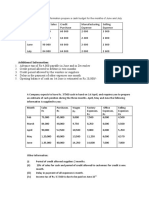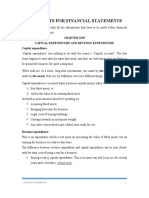0% found this document useful (0 votes)
16 views17 pagesTutorial 1 - Post-Tutorial Slides
The document provides an overview of a finance and investments course, detailing tutorial information, advantages and disadvantages of corporations, and key financial concepts such as double taxation, financial decision-making, and the time value of money. It also discusses the differences between public and private corporations, the bid-ask spread, and examples of financial calculations related to investment projects and arbitrage opportunities. Additionally, it covers the valuation of securities and the implications of risk premiums in investment decisions.
Uploaded by
m.guerreroleyvaCopyright
© © All Rights Reserved
We take content rights seriously. If you suspect this is your content, claim it here.
Available Formats
Download as PDF, TXT or read online on Scribd
0% found this document useful (0 votes)
16 views17 pagesTutorial 1 - Post-Tutorial Slides
The document provides an overview of a finance and investments course, detailing tutorial information, advantages and disadvantages of corporations, and key financial concepts such as double taxation, financial decision-making, and the time value of money. It also discusses the differences between public and private corporations, the bid-ask spread, and examples of financial calculations related to investment projects and arbitrage opportunities. Additionally, it covers the valuation of securities and the implications of risk premiums in investment decisions.
Uploaded by
m.guerreroleyvaCopyright
© © All Rights Reserved
We take content rights seriously. If you suspect this is your content, claim it here.
Available Formats
Download as PDF, TXT or read online on Scribd
/ 17



















